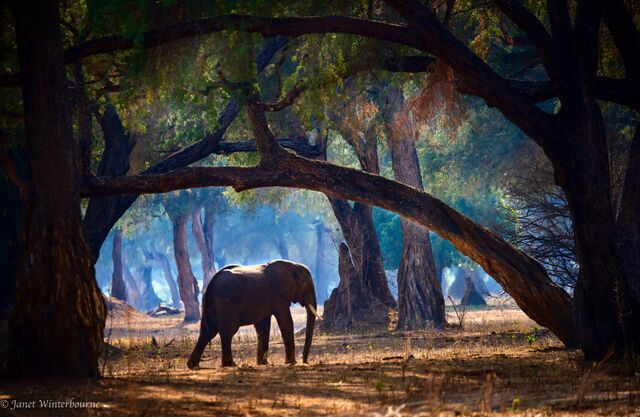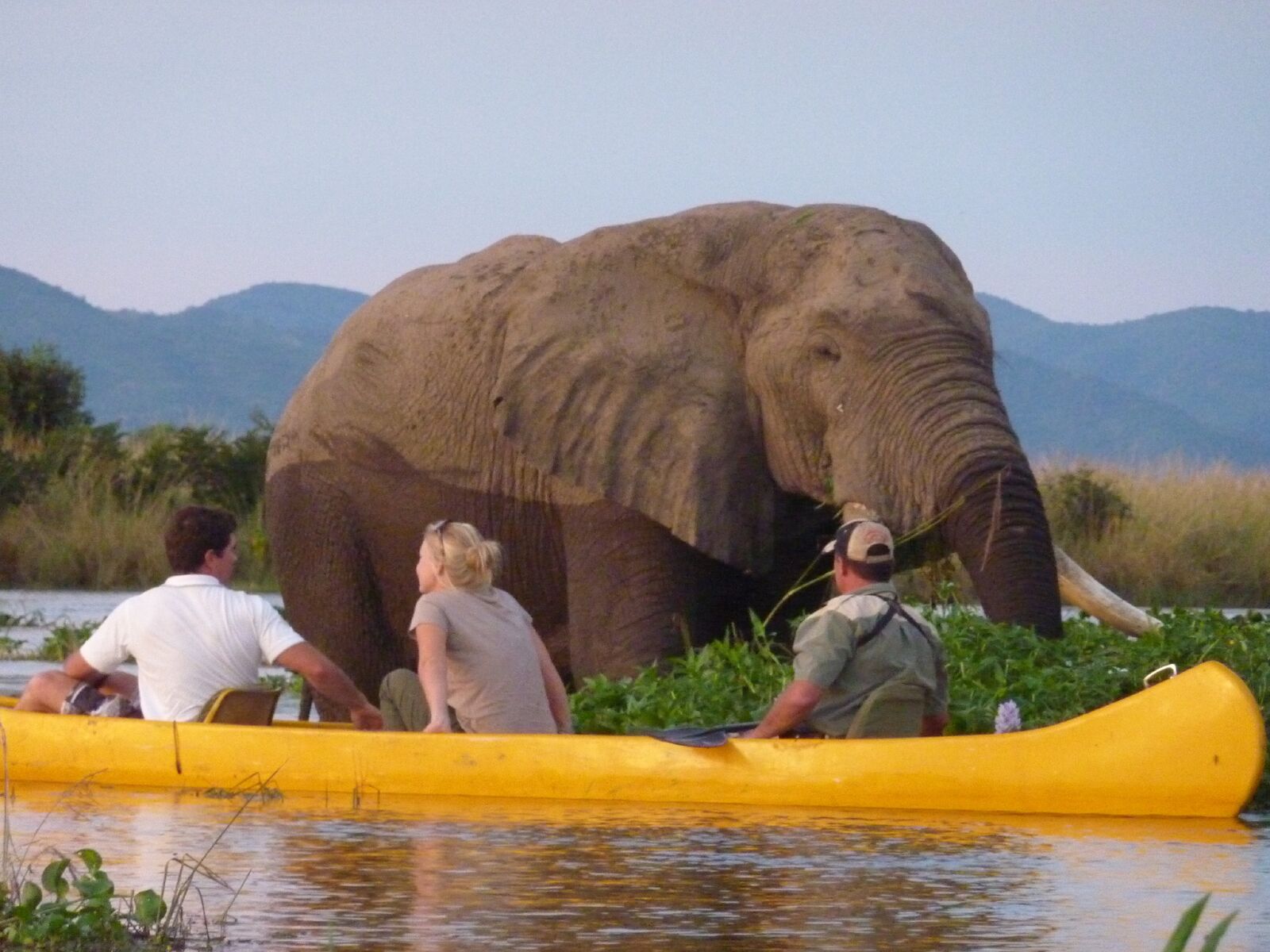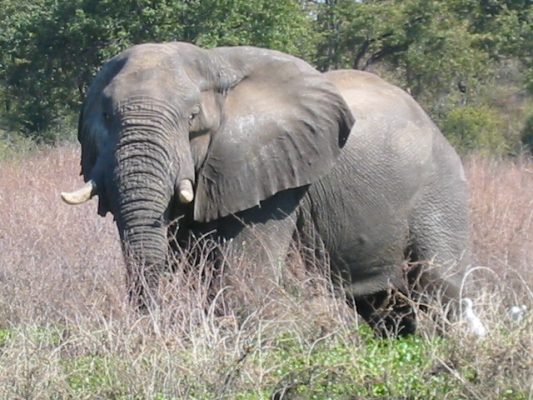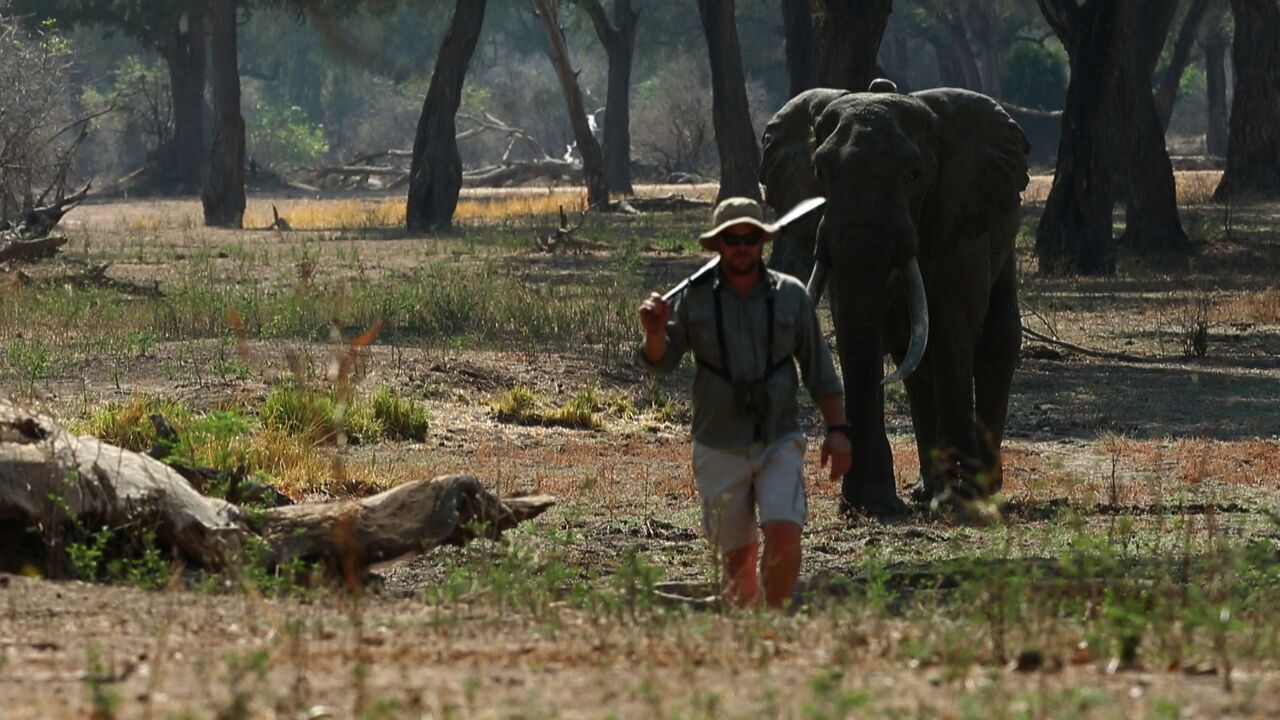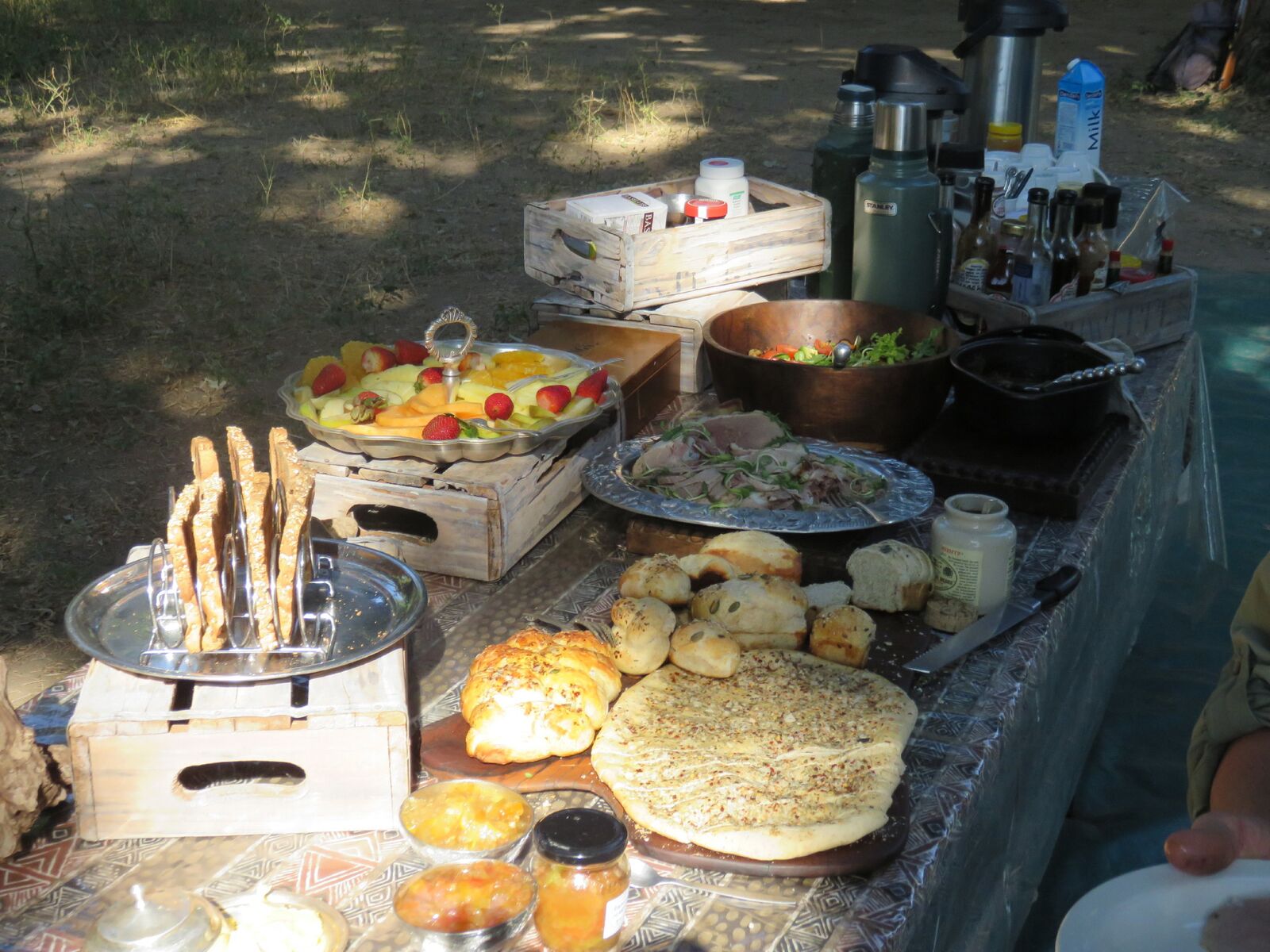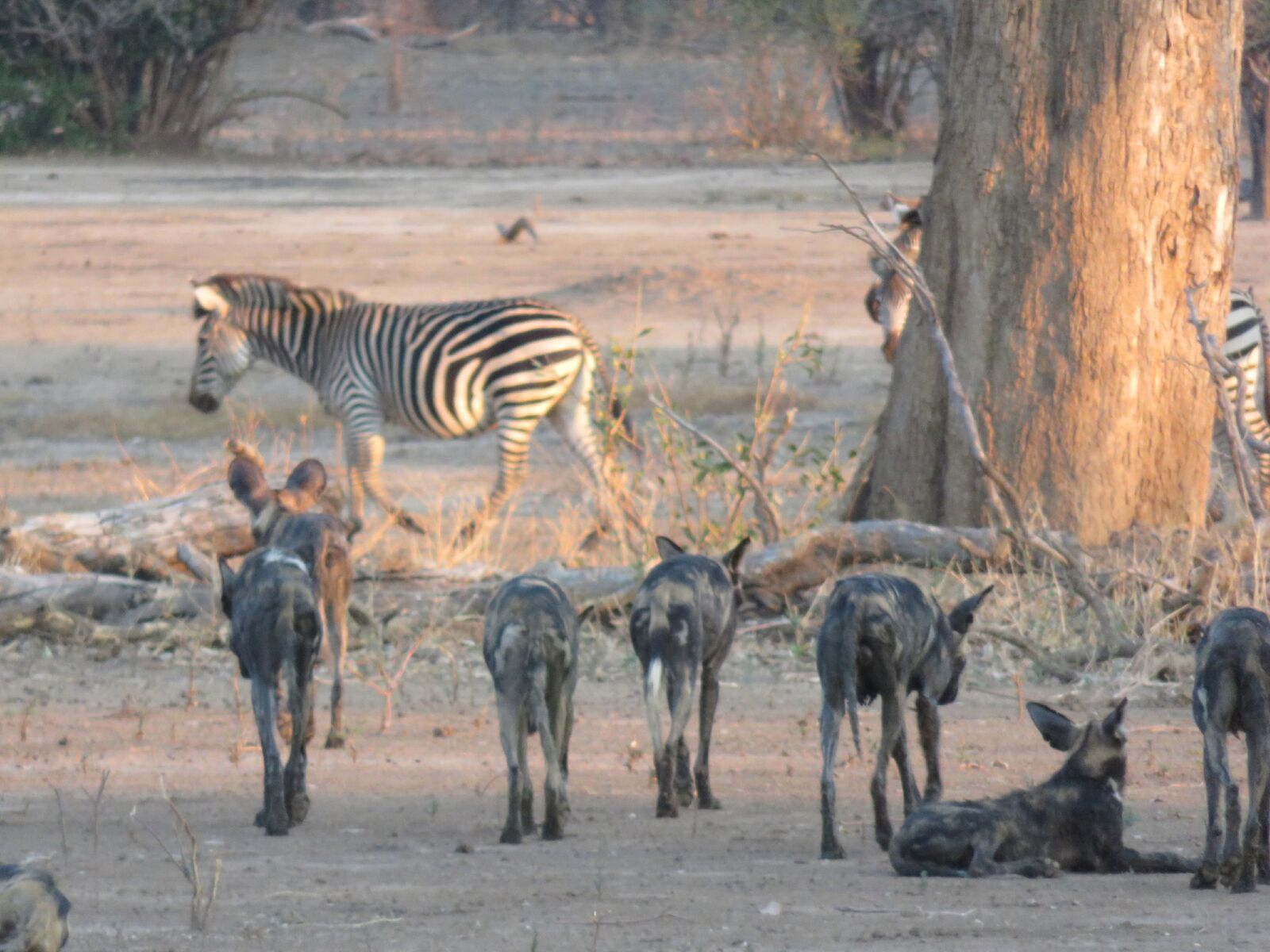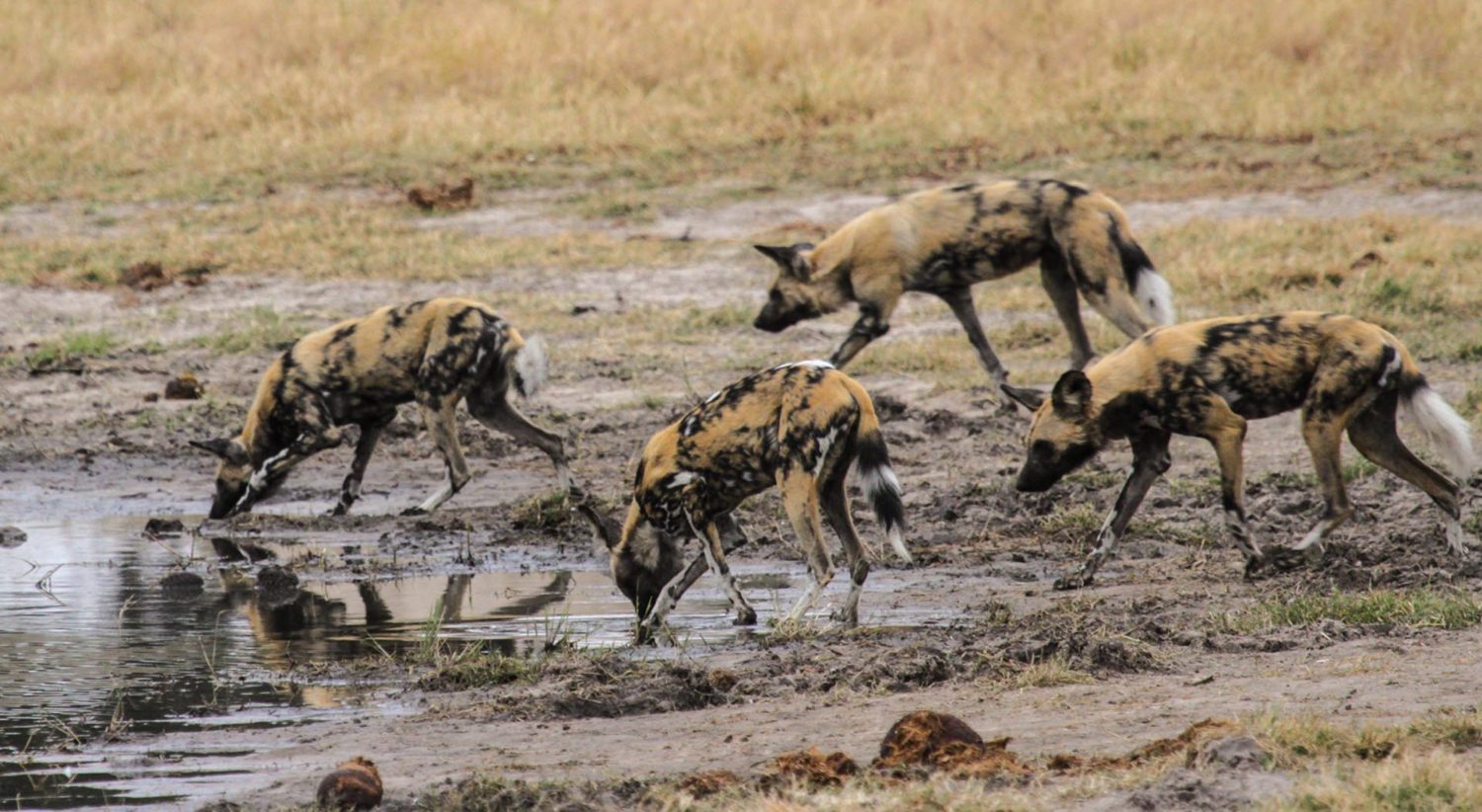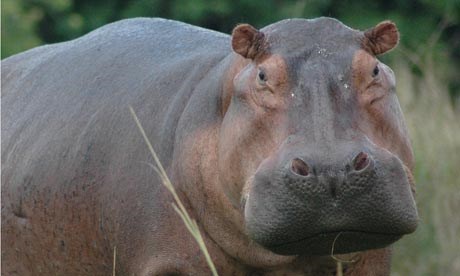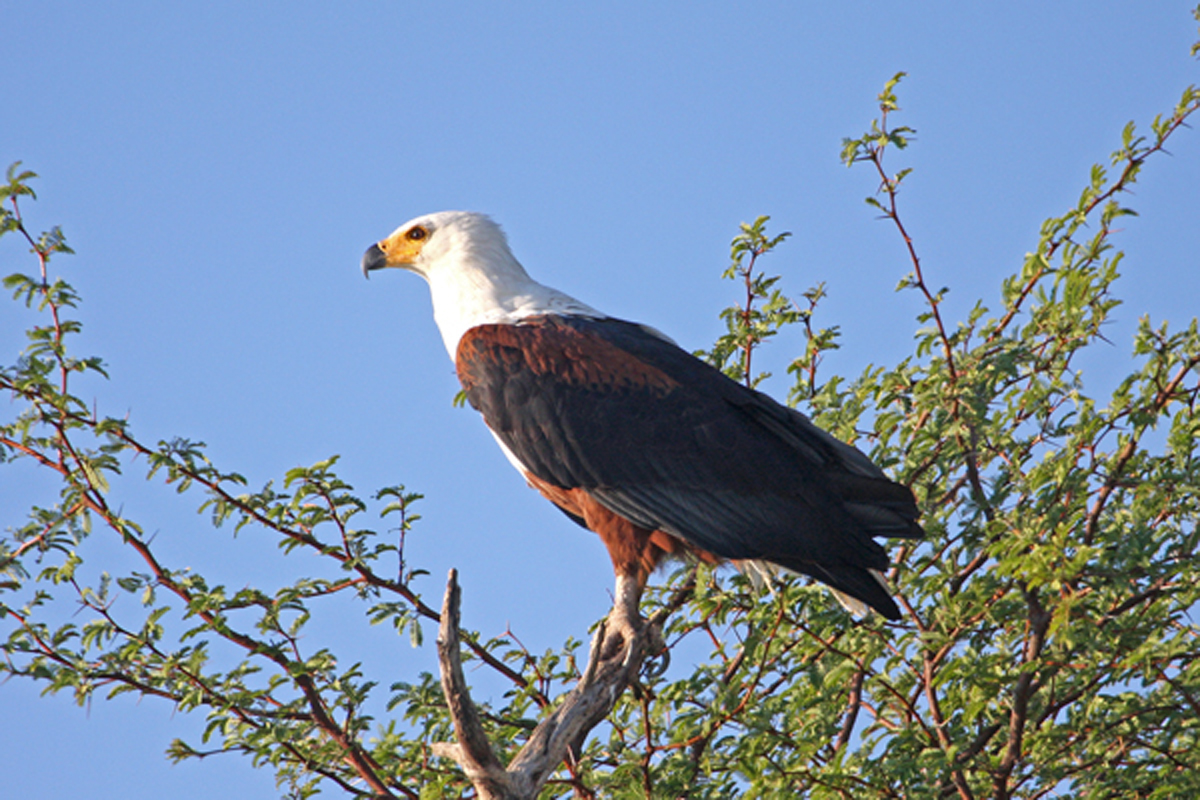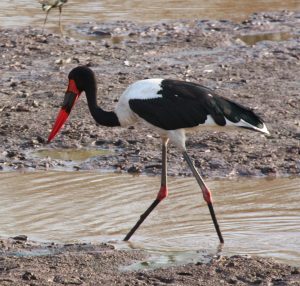Mwinilunga Safari Camp Situated in the Mana Pools National Park on the South bank of the Zambezi River
Mwinilunga Safari Camp is owned and run by Dave Mcfarland and his partner Tessa Arkwright, together with their Downs’ Syndrome son, Andrew. Dave has a great sense of humour and incredible knowledge of the bush whilst Tess has a passion for healthy farm food, a love of wild life and the outdoors. Together with Andrew with his warm, infectious smile and welcoming hugs, these are the core ingredients which characterise this wonderful and unique camp. It is just like home away from home!
Located on the banks of the Zambezi River, under a canopy of Apple Ring Acacia Trees, Mwinilunga Safari Camp is an eco-friendly, unique & personalised tented safari camp offering a homely and authentic safari experience, with unique and personalised camping, comfortable tenting, superior catering and fantastic professional guiding.
Visitors to Mana Pools experience the African wilderness in its ‘raw’ form, untainted by commercialization. The park is characterised by its tranquillity, wide open spaces, close up wildlife experiences and unblemished natural terrain. It is renowned for its walking and canoe safaris and large numbers of wildlife, particularly crocodiles, hippos, buffalo and elephant. The impact of man has been minimal so it is common for visitors to have ‘close up’ sightings of wildlife in their natural state.
Mwinilunga Safari Camp offers three options:
- All Inclusive Option
- Part Catered Option
- Self Catered Option
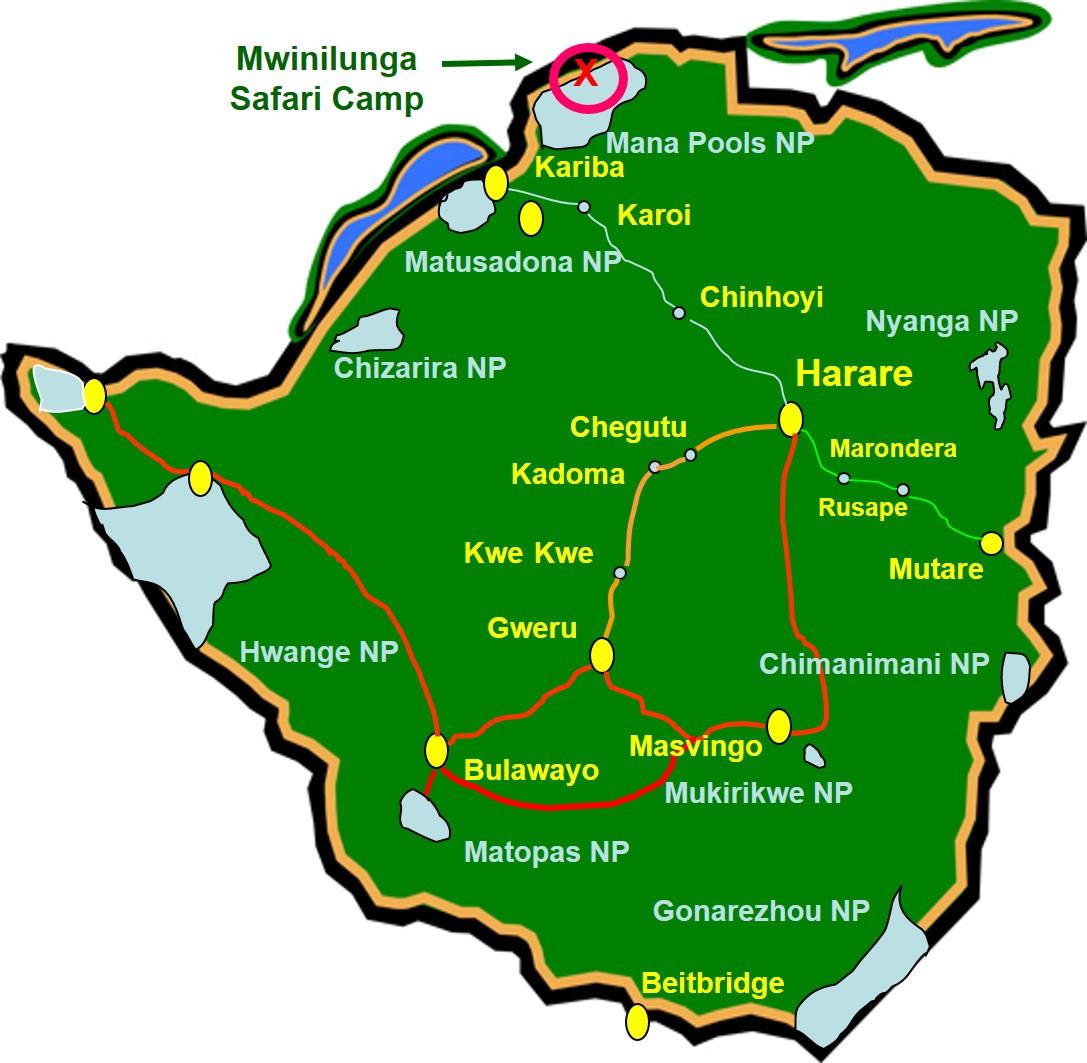
At A Glance

Accommodation
The camp consists of 6 tents and sleeps a maximum of 12 people and each tent has a unique view and is unfenced, merging in comfortably with the natural environment.
Tents can be made up to suit the guests requirements – either single, twin or double
Each tent has an en-suite flushing toilet. Shower under the stars in the two private shared showers in camp.
The dining and bar area is located in the heart of the camp, on the banks of the river, under the shade of the Apple Acacia Trees.
Tess is a trained chef and Mwinilunga Safari Camp has become renowned for its delicious cuisine and superior catering.
At night time the camp is lit up with solar lights in and around the tents.

Air, Boat and Road:
Flying To Mana Pools:
From Harare 2 ½ Hrs
From Vic Falls 2 ¼ Hrs
From Kariba ½ Hr
All flights require a minimum of 2 passengers.
Contact us for rates.
Boating to Mana Pools:
Road transfer to Chirundu and boat down the river to Mana.
Speedboat – 2 Hrs; max 4 pax
Pontoon – 3 Hrs; max 6 pax – 3 Hrs; max 8 pax – 3 Hrs; max 10 pax
Driving to Mana Pools:
From Harare approx 8 Hrs
From Kariba approx 4 ¼ Hrs
From Vic Falls approx 9 Hrs (and 2 border posts.)
There are 2 other options for this route – albeit long – please contact us if interested.
Guests can also drive to Chirundu and then leave their vehicle in secure parking and get a boat into Mana. Each boat can take 4-6 people depending on luggage. The boat trip takes 1.5 – 2 hrs each way.

Road Distances
Harare – Mana Pools 373 kms (233 miles)
Harare – Kariba 358 kms (224 miles)
Bulawayo – Victoria Falls 438 kms (274 miles)
Bulawayo – Matopas 35 kms (28.10 miles)
Bulawayo – Beitbridge 320 kms (200 miles)
Bulawayo – Gweru 164 kms (102 miles)
Bulawayo – Hwange 337 kms (210.63 miles)
Bulawayo – Harare 440 kms (274 miles)
Bulawayo – Kariba 803 kms (502 miles)
Bulawayo – Masvingo 280 kms (174 miles)
Bulawayo – Mutare 578 kms (359 miles)
Bulawayo – Nyanga 686 kms (429 miles)
Hwange – Victoria Falls 102 kms (63.75 miles)
Harare – Bvumba 286 kms (179 miles)
Harare – Nyanga 274 kms (170 miles)
Harare – Mutare 262 kms (163 miles)
Mutare – Bvumba 33.4 kms (21 miles)
Harare – Masvingo 293 kms (183.13 miles)
Bulawayo – Masvingo 280 kms (174 miles
Bulawayo – Mutare 578 kms (359 miles)
Bulawayo – Nyanga 686 kms (429 miles)

Activities:
Activities:
There are several activities at Mwinilunga Safari Camp, providing guests with a choice of how they wish to spend their day. From early morning game walks, fishing for the famed fighting tiger fish and photographing wildlife whilst on a game drive – these are just a few of the adventures on offer.
These include:
- Game walks
- Canoeing
- Game drives
- Birding
- Fishing
Walking: Guided bush walks are permitted within the park. This is a unique, fantastic and exciting way to experience and explore all of what Mana Pools has to offer.
Canoeing: The Zambezi River still demonstrates a certain wildness and supports an amazing array of wildlife. Guided day or half day trips can be arranged.
Photographic Safaris: Mwinilunga’s experienced guides will make every effort to put you in the right place at the right time for as many opportunities as possible to obtain the perfect photo.
Game Drives: Game drives are accompanied by experienced and knowledgeable guides that have a great understanding and appreciation of the area.
Birding: Mana Pools is one of Southern Africa’s premier birding destinations. The park supports the 387 species of birds that make it their home.
Fishing: Mana is a premium spot for fishermen and supports a healthy population of fish species in good numbers and sizes, including the world class African Tiger Fish. Power boating is prohibited on this stretch of the river so all angling is either done off the bank or by using canoes.
For those that want to take some time out to relax, you do not have to venture too far from camp to see wildlife as there are regular visitors including elephants, giraffes, wildebeest, zebra, buffalo, hippo, hyena, wild dogs and lion and leopard.

Mana Pools National Park
Mana Pools National Park is a 219,600 ha wildlife conservation area and national park in northern Zimbabwe. It is a region of the lower Zambezi River where the flood plain turns into a broad expanse of lakes after each rainy season. As the lakes gradually dry up and recede, the region attracts many large animals in search of water, making it one of Africa’s most renowned game viewing regions.
The park was inscribed, in conjunction with the Sapi Safari Area (118,000 ha) and Chewore Safari Area (339,000 ha) as a single UNESCO World Heritage Site (for a total of 676,600 ha) in 1984. The Mana Pools were designated a RAMSAR wetland of international importance on 3 January 2013.
Mana means ‘four’ in Shona, in reference to the four large permanent pools formed by the meanderings of the middle Zambezi. These 2,500 square kilometres of river frontage, islands, sandbanks and pools, flanked by forests of mahogany, wild figs, ebonies and baobabs, is one of the least developed national parks in Southern Africa. It has the country’s biggest concentration of hippopotami and crocodiles and large dry season mammal populations of zebra, elephant and Cape buffalo. The area is also home to other threatened species including the lion, cheetah, Cape Hunting Dog (Painted Dog) and other endangered species such as the leopard and the brown hyena.

Animals and Birds:
Animals:
Elephant, eland, buffalo, impala, waterbuck, baboons, monkeys, zebra, warthog and hippo are some of the larger herbivores to be seen regularly by visitors. Lions, leopards, spotted hyena and cheetah are also present.
Birds:
Over 380 birds have been recorded at Mana Pools. The range of habitats includes woodland, escarpment cliffs and savannah. Waterbirds are well represented along the shore of the Zambezi River and the four pools, which fill up with flood water during the rainy season.
Fish eagle, African skimmer, Black-throated wattle-eye, Southern banded snake eagle, Blue-cheeked bee-eater, Böhm’s spinetail, Crested Guineafowl, Little bittern, Livingstone’s flycatcher, Lilian’s lovebird, Mottled spinetail, Pel’s fishing-owl, Peter’s twinspot, Plain martin, Red-billed helmet-shrike, Rock pratincole, Rufous-bellied heron, Sombre greenbul, Southern carmine bee-eater, White-backed night heron, White-headed black chat, White-headed lapwing.

Mana Pools Weather
Mana Pools has a climate that is warm and hot. September to March is the warmest time of the year, while May to August is the coldest period and these months are regarded as Winter. Due to topographical changes within Mana Pools NP wide temperature changes can occur within the park.
The Dry season is from April to October, bringing pleasant weather and a bright, clear sky. October is the hottest month in most parts of Zimbabwe and typically there are significant temperature rises until the normally predictable first rains in mid November. Downpours followed by sunny skies are typical of the Wet season (November to March), although it can sometimes lightly shower for days at a time.
Dry season –April to October
- April – This is when the Rainy season draws to a close although occasional showers can be experienced into early May. It cools down – particularly at night, and the rains occur with less and less frequency.
- May, June, July & August – These months are typically the coldest and driest although it starts warming up in August. Daytime temperatures are around 28°C, but at night and during the early mornings the temperature is generally around 10°-12°C. Warm clothes are necessary for early morning game drives.
- September & October – These months can be very dry and hot. The first rains occur in late October, early November. The heat reaches its peak in October, with average temperatures of 35°C during the day although it is common for temperatures to frequently rise to over 40°C. The rain and high temperatures results in a significant increase in humidity.
Wet season – November to March
November – The rains are in full force, although it would be unusual for them to occur every day. It often feels uncomfortably hot due to the high temperatures (33°C on average) and increased humidity.
- December, January & February – During the wettest months, it rarely rains all day, but it rains almost every day. Afternoon showers are followed by bright skies, but rain can also come in the form of a continuous drizzle lasting days. Daytime temperatures average 30°C, while night and early morning average 20°C.
- March – Whilst significant rains can still be experienced in March, generally by the end of the month the rains decrease. Temperatures average between 30°C and 19°C.

Weather
Average Maximum Daytime Temperatures
- January 30°C
- February 30°C
- March 30°C
- April 30°C
- May 29°C
- June 26°C
- July 26°C
- August 29°C
- September 32°C
- October 35°C
- November 33°C
- December 31°C
Summer day time highs can reach 38° to 40°c
Winter night time lows can reach 5° to 10°c
“Brilliant camp with fantastic hosts Dave Tess and staff. The setting on the banks of the Zambezi is very tranquil and relaxing and lends itself to frequent visitors of elephant. You will not be disappointed …”
“I had the pleasure of spending 13 days at Camp Mwinilunga and hands down, it was one of the most incredible experiences I’ve ever had!…The hosts at Mwinilunga Safaris run a very environmentally conscious operation…And they feed you. Real Good! Tess’ kitchen produces 3 course meals which aces both in taste and presentation! Other general facilities at the camp are top notch…”
“To be honest – I don’t know how to describe this special place on earth. Its not only the warm welcome, it`s not only the wonderful tents, it`s not only the fantastic food, it`s not only the view over the Zambezi river, it`s not only the big family table in the middle of the camp, it`s not only the wildlife walking through the camp…It is relaxing in a very special way, it`s down to earth, it`s peace, it`s Tess, Dave and Andrew. It`s family.
Would like to recommend this to everybody who loves Zimbabwe as much as we do.”
“The camp setting is beautiful, on the southern banks of the Zambesi. The camp is perfectly functional; spacious and comfortable tents (with bathrooms, to avoid having to choose between holding and risking your life at night); a pleasant and scenic common area; and the best shower room I have ever used, period. The host family is warm, competent and immensely knowledgeable. Together with their staff, they ensure your stay and all the activities (game drives but also highly recommended walks) proceed smoothly and linger in your memory.”

